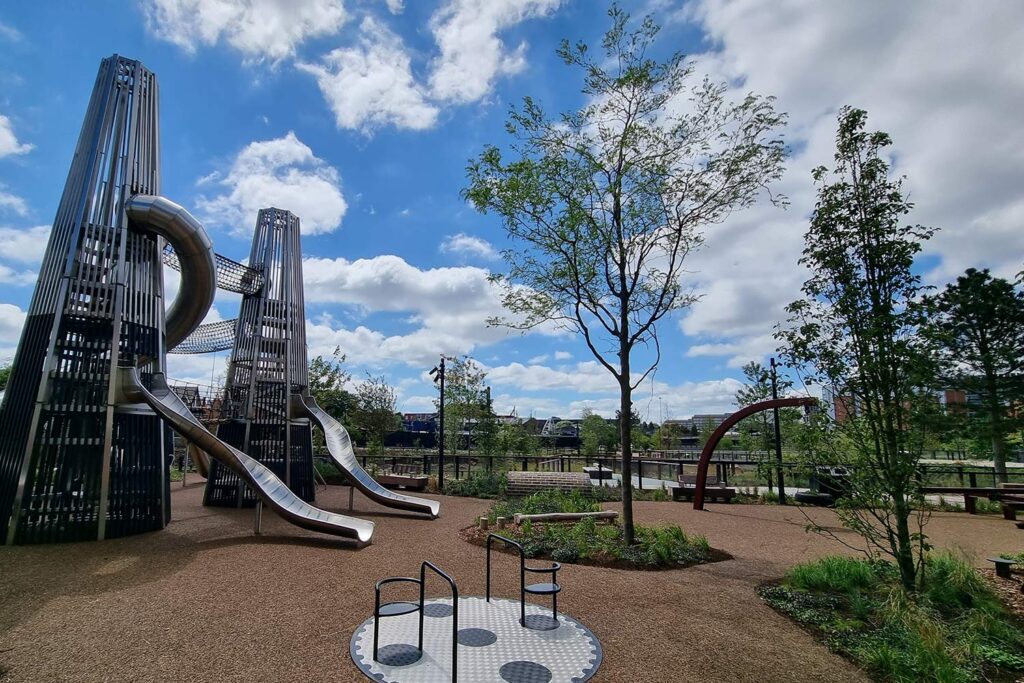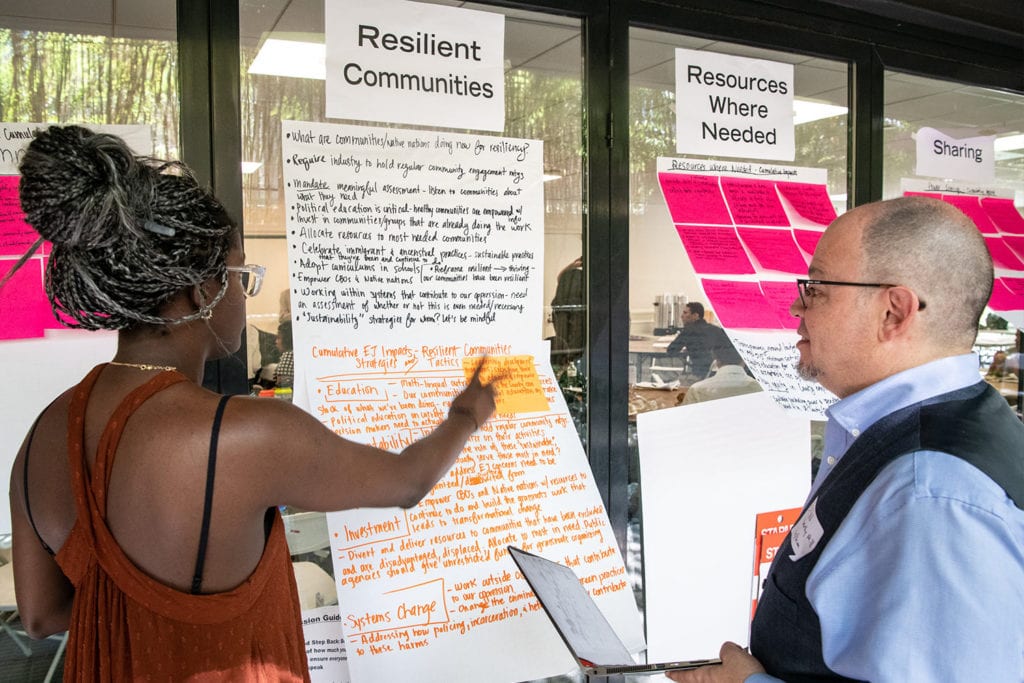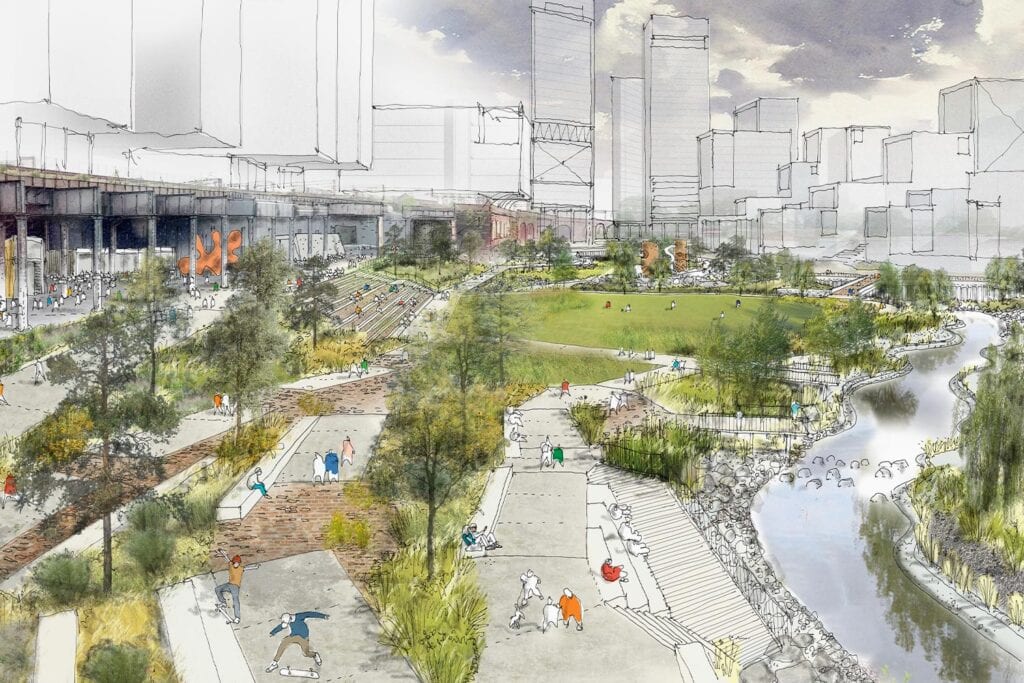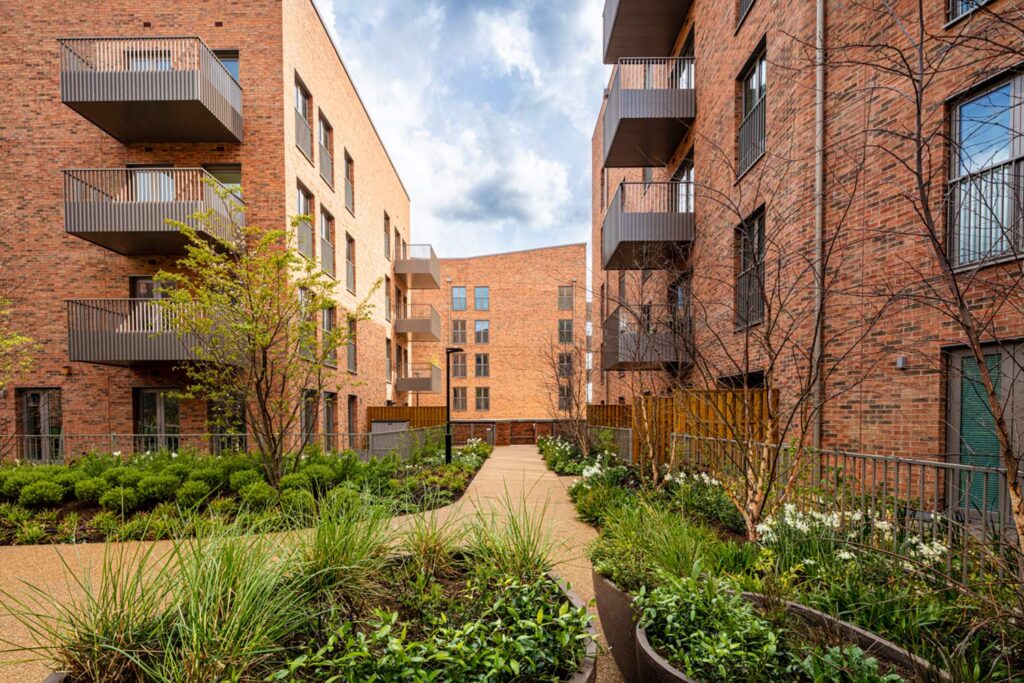Mandatory biodiversity net gain: what is it and why does it matter?
A new milestone has been achieved for nature and biodiversity as biodiversity net gain (BNG) becomes mandatory in England. While many local planning authorities have been introducing BNG for some years, this will now mean that all development (with some minor exceptions) will have to apply this methodology. Here, we explore what BNG is, the implications for our clients and how Buro Happold has been approaching BNG to help our clients in delivering the best possible outcome for biodiversity.
What is biodiversity net gain?
BNG is a method that assigns a metric-based value to habitats using a standardised methodology. Change in habitat value as a result of land use change or development is objectively measured using an evidence-led approach. It provides a transparent method for assessing impacts to biodiversity resulting from development – and it’s one that all stakeholders can understand.
BNG has been on the agenda in England for over a decade. It was recognised that the UK planning system was not doing enough to reduce declines in the abundance and diversity of habits and species. The UK is one of the most nature-depleted countries in the world, so BNG is part of the solution to reversing the trends in the decline of biodiversity. One of the key features of BNG is the statutory target of needing to increase the biodiversity value of a site by 10%. This is the minimum target set by the Secretary of State, but some local planning authorities are looking to set higher targets which can be facilitated through Local Plan policy.
BNG relies on the use of a metric to measure biodiversity value before and after development, which includes both negative impacts and beneficial measures that assist with improving the BNG score. The Statutory Metric published by DEFRA is the main metric and the only one referred to in legislation, but there are other specific metrics that are used by some Local Planning Authorities and other bodies.
BNG is also underpinned by the mitigation hierarchy: this is a widely used tool designed to help users limit negative impacts on ecologically valuable habitats from development. It highlights best practice and includes four sequential steps for managing biodiversity throughout a project’s lifestyle – avoidance, minimise, mitigate and offset. This means that impacts to the most important ecological features which have higher biodiversity value within the BNG metric are avoided and minimised as a priority.
If some impacts are unavoidable, they should be mitigated. Offsetting should only be used as a last resort after the other options have been fully explored. Local planning authorities will need applicants to demonstrate how this process has been followed to ensure compliance. This prevents the system from being exploited in not allowing removal of high value habitats to be compensated with those of a lower value.

Image: Buro Happold
“Biodiversity net gain calculations and assessment must be undertaken by a suitably qualified and experienced ecologist, and trading rules in the metric must be satisfied. For example, small areas of high value habitat, such as woodland, cannot be replaced for larger areas of lower value habitat, such as grassland.”
Mónica Lozano Subiranas, senior ecologist, Buro Happold
What does biodiversity net gain mean for clients?
Biodiversity net gain is not a new concept. It has been present in ecology for years. It is embedded in the National Planning Policy Framework and some local plans and core strategies already have a policy for net gain, where the main target is to leave the place in a better state than it was originally. The new mandatory biodiversity net gain requires all major developments to achieve at least a 10% net gain and to secure onsite and off-site habitats maintenance for a minimum of 30 years, through a habitat management and monitoring plan. However, local planning authorities can impose their own net gain target within their local plans and/or core strategies. For example, the Greater Cambridge Local Plan has set a 20% net gain target which has to be met.
We work with clients to consider site selection, whether it’s a greenfield or brownfield, the existing ecology value of the site, the site assessment, where biodiversity should be considered at early stages of the design and the management requirements to meet the 30-year period. Achieving net gain targets can be challenging, especially in urban spatially constrained environments.
Biodiversity must be considered at early stages of the design – where possible at the feasibility stage – to reduce project risks and costs, and ensure net gain targets can be met.
Mónica Lozano Subiranas, Senior Ecologist, Buro Happold
The benefits of involving an ecologist early in the process means that these risks can be understood up front, but also that potential opportunities can be embedded into the design. This not only benefits biodiversity, but also often makes the scheme more appealing to decision makers.
How biodiversity net gain can be delivered
At Buro Happold our team has been working with the BNG process since the initial release of the BETA metric in 2012. Since 2019, our ecology and biodiversity management team has been incorporating the BNG metric approach into our UK projects and liaising with architects and landscape designers to identify opportunities to deliver net gain over and above the 10% target. We optimise and adapt our service offer to the client’s needs, objectives and end-goals.
Our team always seeks to understand our clients’ requirements at the earliest possible stage, so we can advise on the potential impacts, as well as opportunities for integrating nature-based solutions within the design that will both improve the biodiversity net gain score, but also provide co-benefits. These include:
- Improved recreational space and well-being
- Carbon sequestration and storage contributing to net zero targets
- Improved drainage and water attenuation
- Reduction in temperature (heat islands)
- Improved air quality.
Biodiversity net gain is not always just ecology specific, and needs to be completed or developed in collaboration with other teams and disciplines. Our approach brings in experts from other environmental disciplines, including experts in landscape design, hydrology, air quality, to ensure that we deliver holistic solutions that tackle both the biodiversity and climate crises, improve access to nature for society, and offer benefits for health and well-being.
Aaron Grainger, Associate Director, Buro Happold
Buro Happold will also look for opportunities to work with our clients both on specific sites and wider landholdings. There are often multiple opportunities to be had in improving and creating habitats in areas that cannot be developed which can subsequently be used as a private habitat bank with the dual benefit of providing a solution for biodiversity offsetting sites, as well as being commercially appealing. Collaboration with Local Planning Authorities and developers is key to ensure these opportunities can be fully realised.

Mayfield regeneration
The Mayfield regeneration project in Manchester aimed to tackle long-term biodiversity loss in this area, primarily through the reopening of a long section of the River Medlock. The site was a former industrial site with limited ecological value. The ecology and biodiversity management team at Buro Happold supported the incorporation of various enhancements and habitat creation throughout the park, resulting in over 90% net gain in biodiversity. Interventions included river naturalisation by removing walls and culverts and delivering a mosaic of natural habitats along its length.
The Mayfield project transformed the area into a new community with ecology at its core and delivered multiple co-benefits, including flood risk mitigation through the naturalisation of river, recreation space for the public, increased climate resilience and adaptation and the provision of habitats, foraging and nesting resources for wildlife.
Kathryn Weir, ecologist, Buro Happold
Due to the success of this project, it has won multiple awards including, but not limited to, 2023 Landscape Institute Awards, Excellence in Place Regeneration and 2023 Chartered Institute of Ecology and Environmental Management Award for Best Practice – Innovation.

Beyond biodiversity net gain
In addition to the benefits for nature and biodiversity, BNG can also provide added value in the form of co-benefits for people, for example by providing amenity, creating spaces for people and connecting them to nature. The IGNITION project in Manchester shows that the increase of green infrastructure – such as green roofs on site – could help to mitigate air and noise pollution, and reduce the urban heat island effect.






